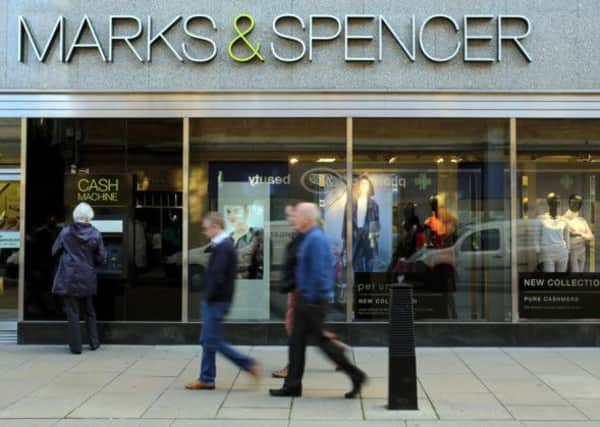Why the BHS collapse is a wake-up call for Marks & Spencer


HUNDREDS of stores the length and breadth of the country and a high-profile presence on our high streets for decades, yet fighting a worrying decline in sales and stalked by the sense that it has been too slow to recognise the true scale of the internet revolution.
No, we’re not talking about BHS – the department store giant in danger of joining Woolworths in the graveyard of British retail’s best loved names – but Marks & Spencer, that proud cornerstone of the nation’s shopping experience since its humble beginnings as Michael Marks’ Penny Bazaar at Leeds Market more than 130 years ago.
Advertisement
Hide AdAdvertisement
Hide AdThe news that BHS has become the latest household name to lurch into administration is a hammer blow to the company’s 11,000 employees. But it’s also being seen as a wake-up call to other big names – not least M&S – that department stores can quickly go from national institution to museum exhibit if they fail to keep pace with shopping habits that are changing at break-neck speed.
“We have seen a generation’s worth of change in the space of about five years,” agrees retail analyst Catherine Shuttleworth of Leeds-based shopper marketing agency Savvy, pinpointing the challenge now facing traditional high street chains as they play catch-up.
“The internet has changed the way we buy goods and it’s not going to change back. If you’re late to the party, as BHS was, people will move into your market and take your customers. You have to stay relevant and I’m afraid all that history and heritage count for nothing. Nostalgia doesn’t enter the equation and M&S should be looking at this with a chill in their bones.”
Shuttleworth believes the size of general merchandisers such as Marks & Spencer puts them at an immediate disadvantage. In their case, moving with the times is like pulling off a U-turn in an oil tanker.
Advertisement
Hide AdAdvertisement
Hide Ad“Say I’m watching the Baftas and there’s an actress there in a pink dress that I love. I want to buy that dress, or a cheaper version of it, tomorrow. The likes of Asos will source it from the Far East or even make it in Leicester and get it out there in a matter of days.
“But the big problem for the likes of BHS and Marks & Spencer is that they work in collections, so by the time they’ve got it in their shops it’s already old hat. Shopping doesn’t work in seasons any more – it works in weeks and Friday nights.
“It’s why, if you look at a place like Leeds, many of the stores are more about experiences than shopping as we knew it five years ago. Shops like Hollister, Victoria’s Secret and the Apple Store are used as changing rooms. People enjoy the music and the visual stuff and then use their smartphones while they’re in there to order things online.”
What M&S is struggling to grasp, she says, is that size no longer matters. In fact, a national network of cavernous stores can quickly become a millstone around the neck as the costs associated with them don’t translate into sales figures. Then there is the fact that they sell little that is unique to them.
Advertisement
Hide AdAdvertisement
Hide Ad“The question they need to ask themselves is what do people go there for? That was always the question with Woolworths before it went under,” she says. “These monolithic retailers fall across several categories. They offer something to everybody but fall down because they have no distinct purpose and there is nothing they sell that I couldn’t get elsewhere.”
So what is the answer? Shuttleworth believes that if the likes of M&S, Debenhams and John Lewis are to avoid a similar fate to that suffered by BHS then it’s time for them to be bold and carve out a new, distinct identity for themselves. “They need to decide what they are going to be famous for and really go for it,” she says. “If it’s being British then that’s what they have to go after – as well as making sure they have a great online presence.”